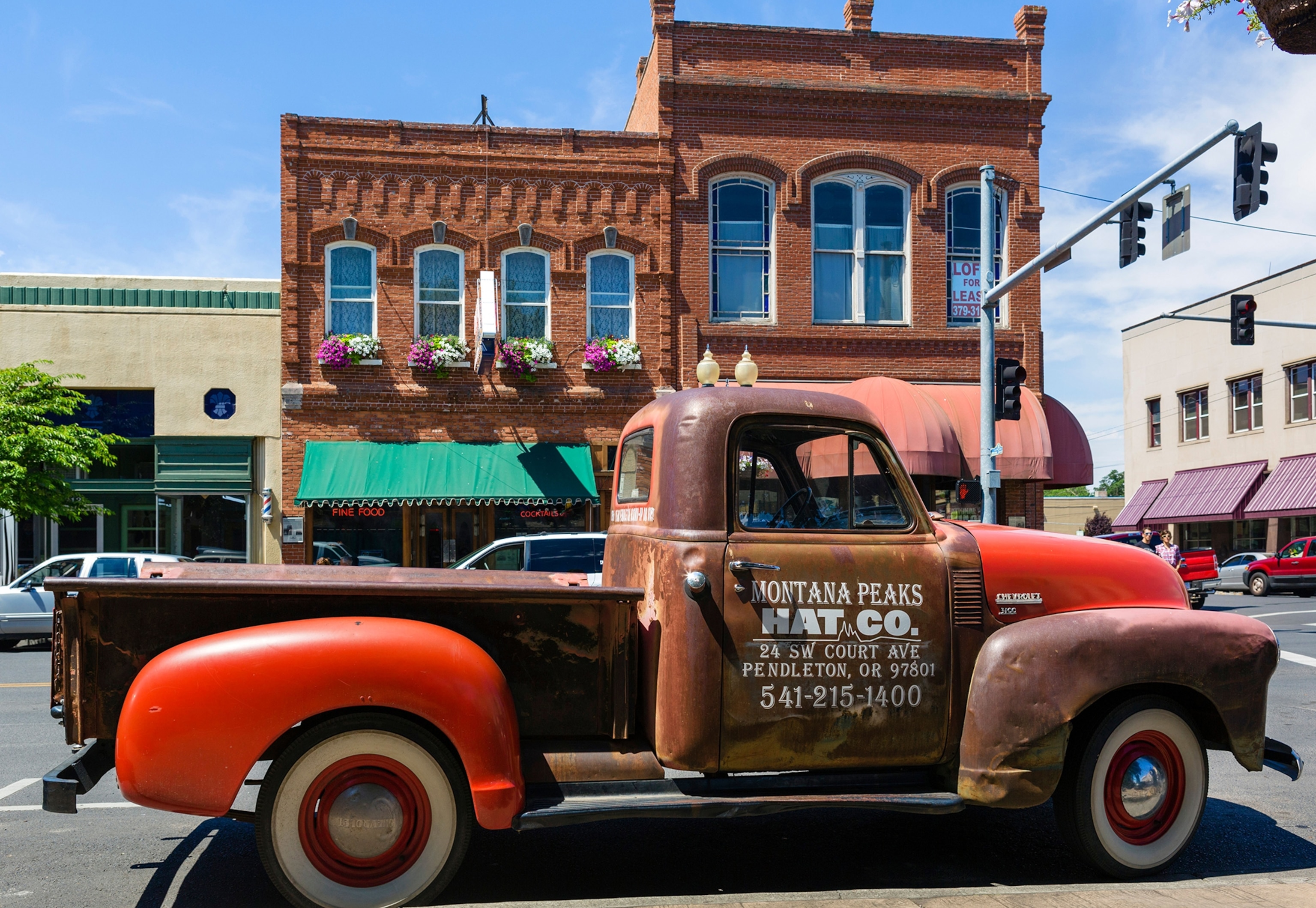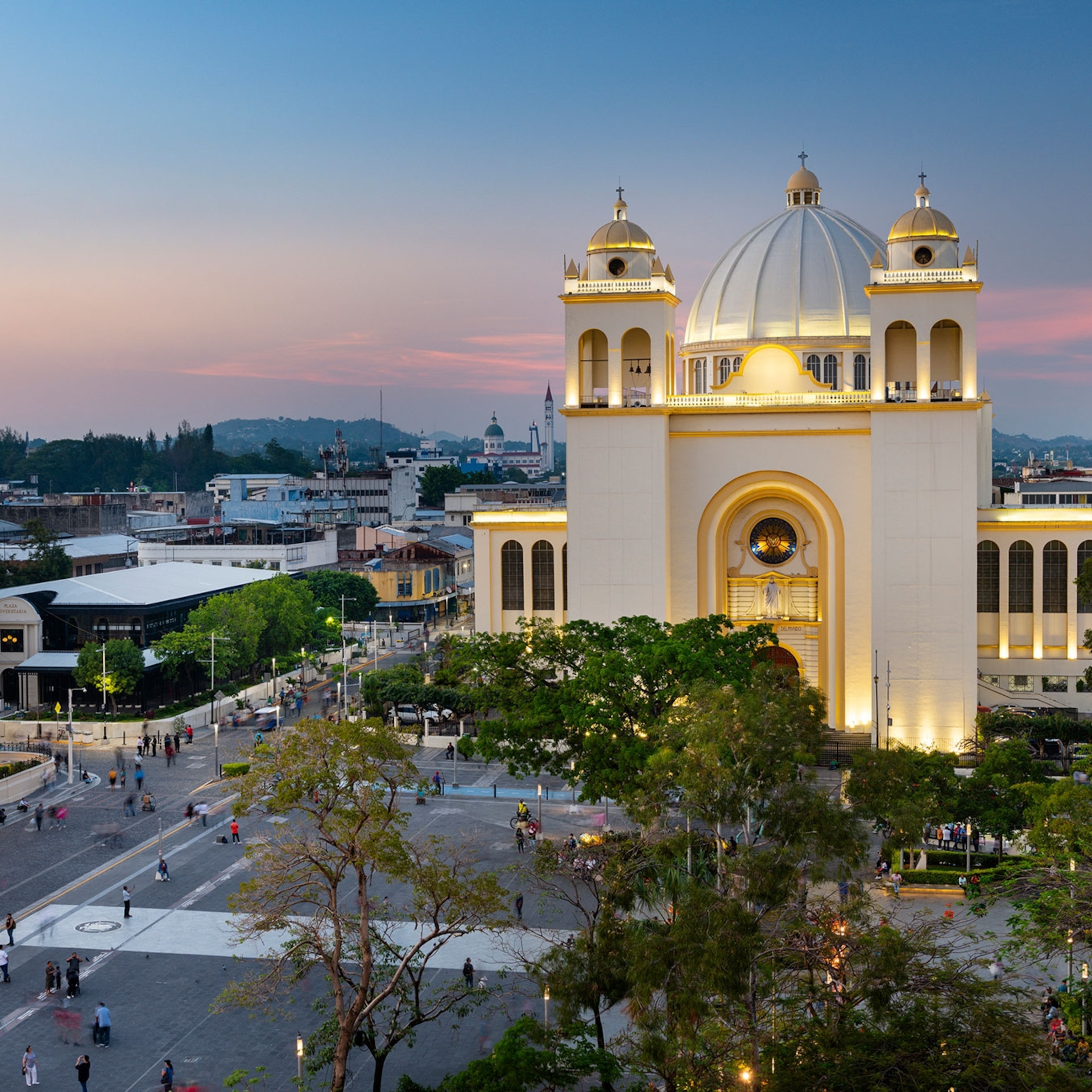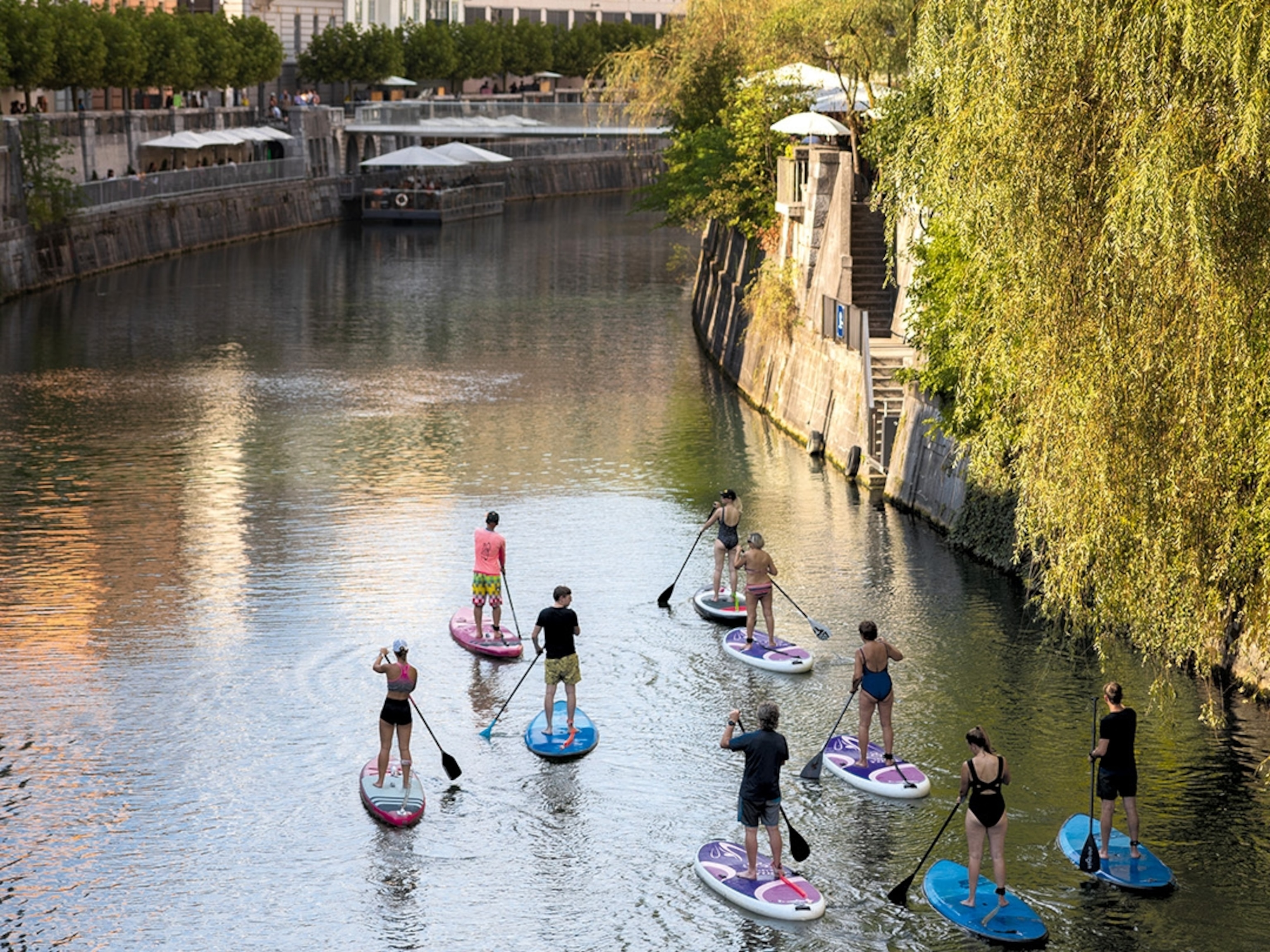
Oregon's Outlaw Outpost: Pendleton
Brothels and bootlegging may be part of Pendleton's past, but the outlaw ethos endures. Find out what makes this sleeper city tick.
Almost lost in a ravine off the interstate in eastern Oregon’s high plains, historic Pendleton is known for its real-deal Western-wear shops, iconic woolen mill (of “Pendleton blanket” fame), and an epic September round-up rodeo that's been around since 1910.
It’s fun even if you don’t drink, but it’s probably better if you do. The sleeper city, located about 200 miles east of Portland, boasts one of the most idiosyncratic bar scenes west of the Mississippi.
I start out my Friday night at Crabby’s Underground Saloon, a couple stools down from a ranch hand named Mac who's trash-talking “rodeo fancy boys” as a B.B. King song plays on the jukebox. Joining in is the reflective bartender, Kelly Davis, who’s busy concocting an entry for this year’s Battle of the Bars, where local watering holes compete for bragging rights to the best mixed drink in town.
“It tastes just like a watermelon Jolly Rancher,” she says with pep. “But you have to make it with Coors Lite. I tried it with a Bud once. Didn’t work.”
She slides over a glass tumbler containing a dash of the pink liquid. At first sip, its tangy sweetness knocks me back to my sugar-fix teen years. Whoa.
I mask the taste with a pint from the two-dollar “mystery tap” (a local porter; my lucky day), then wander three blocks to Great Pacific, a café installed in a Masonic Lodge dating to 1887. I see seven kinds of lattes on the menu, along with fresh-made pizzas, a dozen microbrews, and about twice as many wines—a veritable Portlandia-worthy selection. I go with an IPA and sit in the adjoining room, where two guys with guitars play 1970s country songs on a small stage for a 20-person crowd.
After a few tunes, I head to Hamley Saloon, a Pendleton staple that's attached to a steakhouse, Western-wear shop, and café. Compared to most downtown bars, it’s positively glitzy. A century-old mahogany bar shines under the golden glow of a chandelier as patrons—mostly couples sporting cowboy hats—dance to upbeat bluegrass played by bearded musicians hunched over their instruments on stools. One scratches a washboard.
Same as it always was. Sort of.
In the late 1800s, people came to Pendleton to be bad. The town was awash in bars, brothels, and gambling dens—and a series of underground tunnels that provided easy access between the various vices and a handy escape route in the event of a Prohibition-era raid. And though Pendleton's rowdy reputation has softened some, an outlaw ethos remains part of its DNA.
The next morning, I learn more about the city's hidden history when I join Pendleton Underground Tours for an excellent 90-minute walk through the passageways that snake below the streets. On our route, we come across turn-of-the-century opium dens, butcher shops, and bootleg whiskey bars. Most of it’s been recreated, but the tunnels are real and filled with period-appropriate paraphernalia.
My guide, Shannon, tells us that Chinese immigrants—who came to the American West in droves in the mid-to-late 1800s to work as miners and laborers on the transcontinental railroad—were persistently harrassed and discriminated against thanks to official sanctioning in the form of state and federal "exclusion laws."
“They weren’t even allowed to spit in the street [without fear of punishment],” she says. In such a hostile climate, especially after dark, when Pendleton became even more lawless, the city's Chinese residents created a self-sufficient subterranean ghetto that facilitated after-sunset movement between legal and illegal businesses both above and below ground.
Though the history of Pendleton's secret underworld is bittersweet at best, the tour is mighty interesting.
The best comes at the end, when our group pops back above ground and into the Cozy Rooms bordello. After ascending a steep, creaking staircase, we pass through the “madam’s quarters,” secret hiding spots used during police raids, and a hallway full of of decked-out “working girl” rooms done up in a kitschy, retro style (the very real Pendleton brothel was closed only in the mid-20th century).
Afterward I get a burger at the classic Rainbow Café, which was once home to the historic 19th-century State Saloon. The walls are lined with a chronological account of Pendleton's famous round-ups. One photograph hanging above the long bar shows a 1939 plane passing over a mule train as it crosses the Oregon prairie.
When I leave and round the corner, I spot a cowboy-looking guy with a handlebar mustache and long riding coat leaving a store (turns out he’s the former sheriff). I go in and find Montana Peaks, home to the ultimate “bucket-list” cowboy hat.
The owner/hat-maker Laura Wortman walks me through the process of how they custom fit hats for your head using 19th-century tools. The best, she says, are the beaver hats, which cost a pretty penny ($400 and up) and take a week to make.
- National Geographic Expeditions
“There’s so much history in Pendleton,” Laura says. “We have one of the last working wool mills—and bootmakers, [and] us. In Pendleton, you can make whatever you want.”
I mention that despite this being my third visit to town, I’ve yet to see the famous Pendleton Round-Up. I tell Laura that I've heard it can get a bit crazy, but she tells me not to worry much.
“Drinking on the streets happens, sure. But the rowdy stuff? Not anymore," she says. “I mean, one year a gentleman tried to hang [his] buddy. That was wild.”
I think I’ll be back. Hopefully in September this time, and with a hat on.
Where to stay:
Though the city wants for atmospheric lodging options, Pendleton Underground Tours offers a few rooms at the Working Girls Hotel, located just around the corner from the Cozy Rooms bordello, and the lovingly run Rugged Country Lodge, a simple 1950s-era motel located about a mile from downtown, is a steal at $50.






